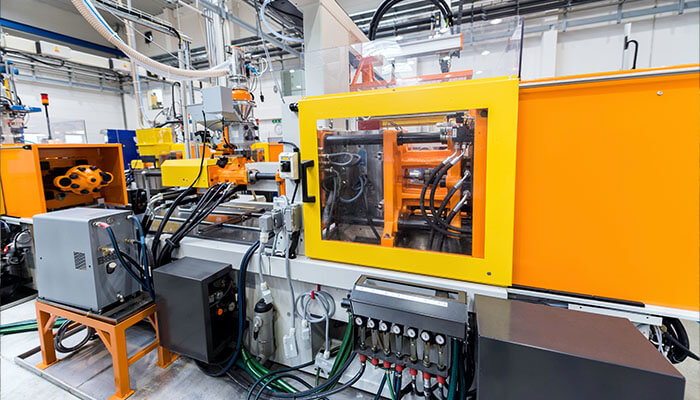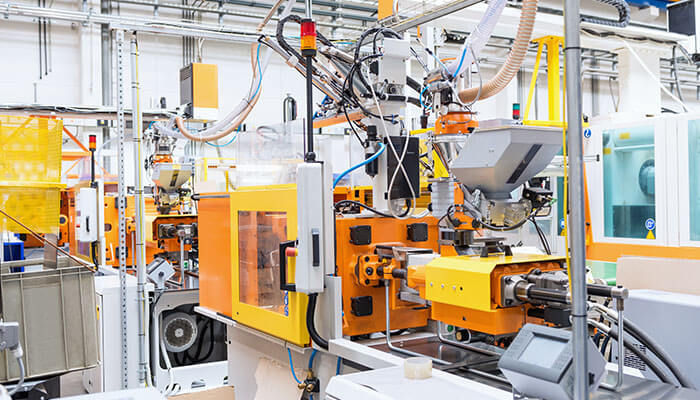Nameplates, plaques, signs, and other custom plastic branding elements can be made using customized plastic injection molding, which involves forcing liquid plastic into a mold. After cooling and solidifying, the plastic emerges from the mold and forms various parts for any industry. Injection-molded products are frequently used for: automobile emblems, vehicle branding, and license plate holders, in addition to product identification for recreational goods, which are all examples of appliance nameplates.
A machine consists of three fundamental components to produce injection-molded plastic name plates and other details:
An injection unit will then inject molten plastic into the mold, where it will remain until it has sufficiently cooled and released. Molten plastic is produced by melting small plastic pellets fed into an injection machine, which is heated to a molten or liquid. A mold that can be made to manufacture any required size and shape. A clamping unit that clamps and holds the mold together throughout the entire process.
The semi-liquid is forced into a mold once the now-molten plastic pellets reach a predetermined temperature. A hydraulic cylinder that, once engaged, causes the liquid plastic into the mold controls the process’s speed and pressure.
The plastic is left in the mold during the “dwell” phase of the plastic injection molding process to ensure it fills it. It is then allowed to cool until it solidifies and the desired object is produced. It is then prepared for auxiliary cycles as adornment, sub-get-together, or shipment.
With the injection-molded plastic process, manufacturers can make plastic components and nameplates that would cost too much to make as intricately as traditional machining. By allowing multiple pieces of the same element to be made simultaneously from the same mold, injection-molded plastics also save time and money; every copy is identical to the previous one. Additionally, this procedure reduces labor costs by reducing the manual labor required by employees.
The history of plastic injection molding Chemists in Europe and the United States experimenting with plastics is credited with developing plastic injection molding. As a result, virtually every material is well-spent. Parkesine was used to press it into a mold at first, but it turned out to be too brittle and flammable. The official inventor of plastic injection molding is John Wesley Hyatt, but brilliant people have used the process for a long time.
John Wesley Hyatt, a creative inventor, developed the process for processing celluloid plastics. This was a remarkable accomplishment for a young printer from Illinois who accepted the New York Billiards Company’s challenge to substitute ivory for billiard balls.
As he and his brother Isaiah began making various mixtures for checkers and other objects, he launched his career in plastics engineering. John combined alcohol, camphor, and nitrocellulose after trying several combinations. He pressed these ingredients into a heated, circular steel mold before letting it cool. He realized he had successfully made a plastic billiard ball when the material was removed from the mold. As a result, plastic injection molding got off to a good start.
In 1870, John and his brother Isaiah created a method for producing celluloid that they patented, and they continued by making dentures using their new material to replace rubber dentures. As a result, the production of celluloid plastics began. John was compared to Da Vinci when it came to industrial innovation because he was also credited with inventing the sewing machine and roller bearings, which significantly impacted manufacturing.
Nowadays, celluloid and cellulosic plastics can be found almost everywhere, including the handles of screwdrivers, toothbrushes, and kitchen utensils. Today, you can discover celluloid in Hollywood, California, where your favorite movies are made.
Another great inventor joined the plastics industry in New York on a fellowship from Belgium to advance plastic injection molding processes. Leo Hendrick Baekeland started working with polymers, which led to Velox, his Kodak Eastman invention. Velox is a type of photographic paper that can be developed using gaslight rather than sunlight.
He also investigated the molecular structure of polymers as a chemist, making several advancements in this area. Beyond what chemists had previously discovered about coatings and adhesives, these investigations led to many inventions and discoveries.
The first successful plastics manufacturing machine was created in Germany in 1926 by Eckert and Ziegler with the invention of the plastics molding machine. As a result, injection plastic molding was successfully integrated into the production line.
In history, the process of plastic injection molding has been used by many more inventive inventors. Today, it has been produced using an even finer method for appliances, nameplates, signs, and plaques.
Today’s version of the injection plastic molding process uses computer-controlled equipment to inject raw plastic material into steel and aluminum molds to make custom plastic name plates, plastic components, and many of the plastic products we use daily. After injecting hot plastic into the mold, the molding equipment cools the plastic and extracts the parts. Today’s molding equipment makes producing large quantities of plastic components simple and economical.
Today, plastic injection molding manufacturers employ electric presses, hydraulic presses, vertical and horizontal presses, injection screw presses, and any other rate of pressure necessary to complete the product pressure to form. Everything from license plates to toothbrushes and car parts can be made using this method.
The Equipment of the Future in Plastic Injection Molding is a very new method that has made many valuable products that we use in our homes every day. Even though there has been a lot of creativity and innovation in the history of plastic injection molding, there are even more possibilities for the future as more creative people develop new ways to improve the equipment and process.
The future of injection molding is now focusing on molds, and mold components as the improvements to plastic injection machinery continue. Metal, epoxy, or carbon fiber are some materials that can be used in high-tech plastic molds to speed up cooling and cycle times and increase output.
We can understand how far plastic injection molding can advance in the future thanks to the development of 3D printing. Using a digital model, a three-dimensional solid object of virtually any shape can be printed using 3D printing. Concepts and samples can be produced at significantly lower costs by incorporating 3D printing into the plastic injection molding.
When you can or where to buy secondhand clothes in bulk in Johannesburg to sell or add to your stylish and trendy outfits wardrobe, why pay more rands for new clothes?
One of the best trades you can start as a small-scale entrepreneur in Johannesburg, South Africa, is the retail sale of secondhand clothing because you can get it from consignment shops that sell it cheaply, saving you money for a sustainable lifestyle.
Additionally, recycling clothes helps the environment by reducing the pollution they produce.
We have you covered if you’re looking for the best Jozi secondhand clothing stores to buy trinkets and other clothing gems! The following is a list of the best dealers in secondhand clothing in Johannesburg, where you can buy clothes in bulk for nearly nothing:
Where to buy used clothes in Johannesburg in bulk One of the main benefits of buying used clothes in Johannesburg in bulk is that you can get outfits that fit your preferences for color, size, and brand at a reasonable price that will guarantee you profits when you resell them.
1. Imported Bales is a Johannesburg thrift store that lets customers buy used clothes in person and online. It sells used t-shirts, sneakers, pants, pullovers, and blouses, mostly imported from Belgium and Germany and is on Eloff Street.
Cheapside Clothing Store is a wholesale retailer of secondhand clothes that offers customers fast and convenient service. If you’re looking for a great place to buy used clothing cheaply in Johannesburg, you should check out Cheapside Clothing Store.
National Clothing Distributors In Johannesburg, the National Clothing Distributors offer a diverse selection of imported jackets and coats of high quality at wholesale and retail prices.
It’s a good place for bargain hunters because the items from Italy are cheaper here.
It encourages originality and creative styling to ensure that all of your chosen outfits are high-quality and reasonably priced so that you get the most for your money.



